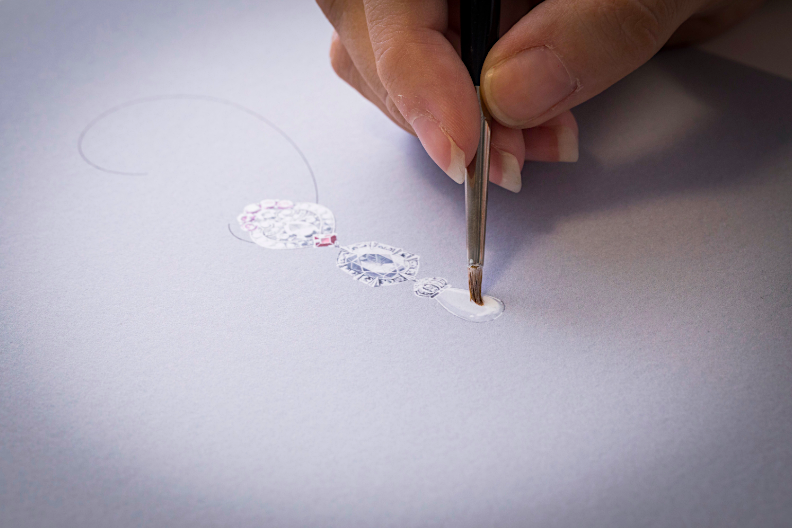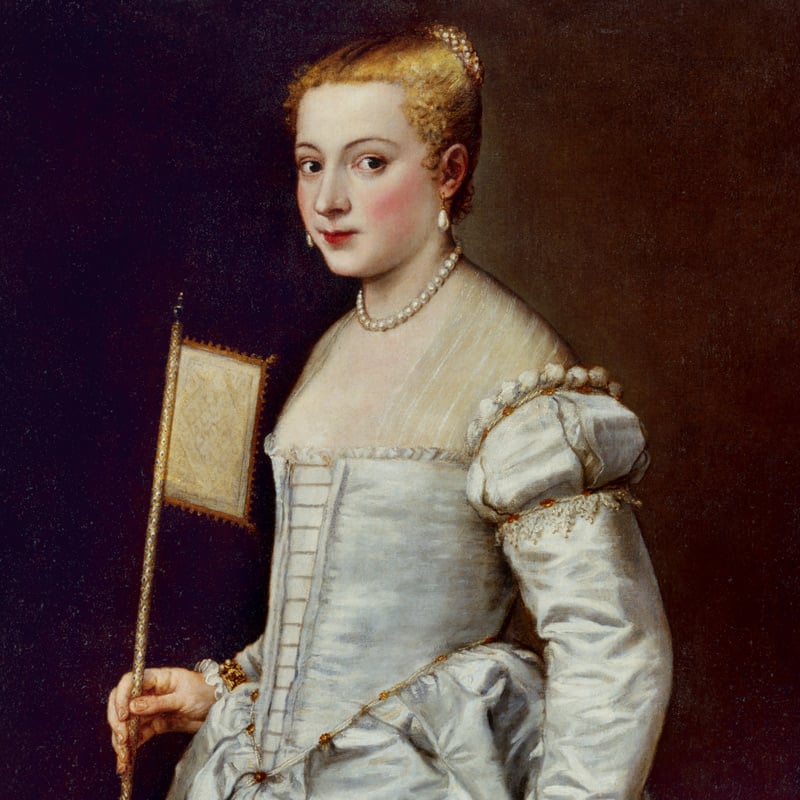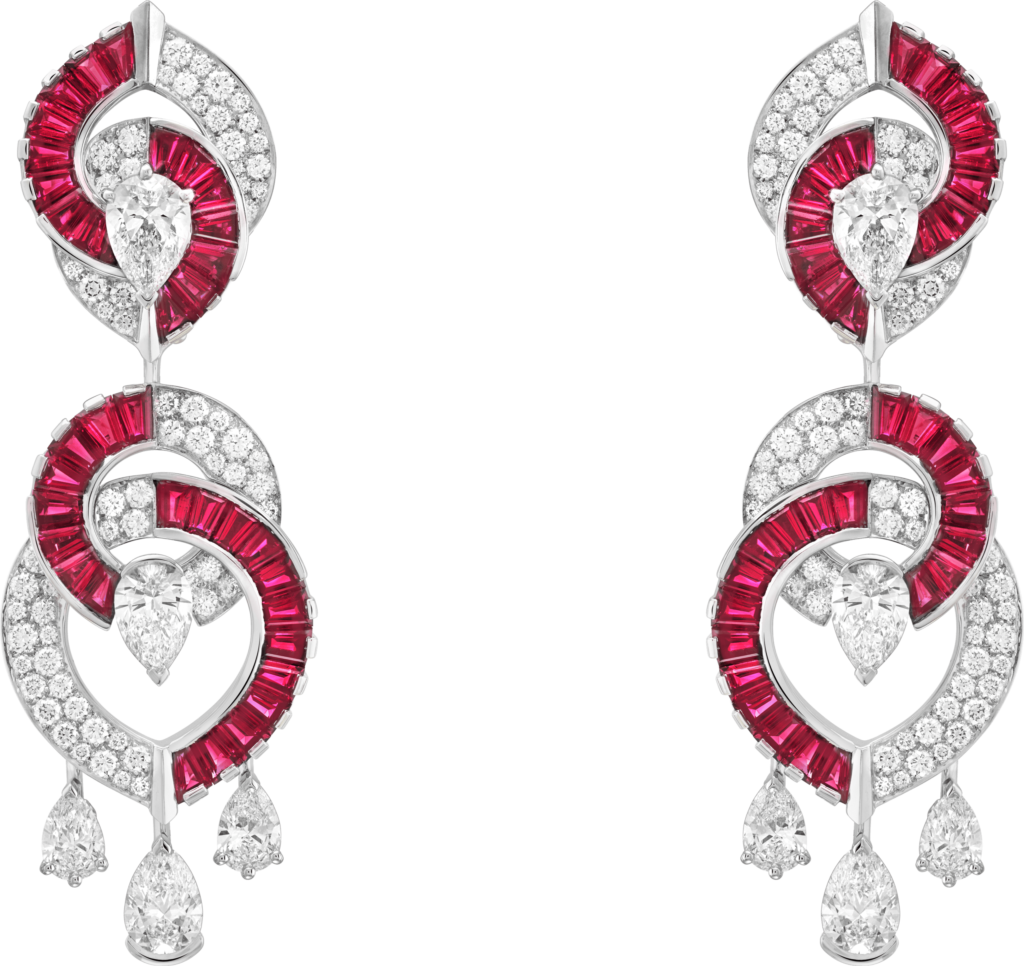Art World
The Art of Craft: A Striking New Jewelry Collection From Van Cleef & Arpels Draws Inspiration From Titian, Picasso, and Shakespeare
The pieces draw their major inspiration from Shakespeare's "Romeo and Juliet."

The pieces draw their major inspiration from Shakespeare's "Romeo and Juliet."

Noor Brara

The Art of Craft is an ongoing series in which Artnet News shares the story behind the making of a special design object.
In Paris last fall, the French fine jewelry house Van Cleef & Arpels debuted its Romeo and Juliet collection, a set of 100 pieces that pay homage to Shakespeare’s ever-popular play and its star-crossed lovers.
The collection, which will make its US debut in the coming months, artfully brings to life scenes and characters from Shakespeare’s beloved tragedy by assigning meaning to the gemstones’ color palettes: the Montagues are represented by rich blues, supplied by lapis lazuli and sparkling sapphires, while the Capulets are present through warmer tones in rubies, orange sapphires, and garnets.

The Lucia earrings with detachable pearls. Photo courtesy Van Cleef & Arpels.
The palettes—and feuding families—intertwine on most of the pieces, which were modeled after opulent, Renaissance-style jewelry. One necklace, for example, features a whopping 42-carat Sri Lankan sapphire, framed by a double row of baguette-cut diamonds that sit high upon and closely follow the shape of the wearer’s neck, in homage to a jewelry style that was popular in the 15th and 16th centuries.
The entire collection nods not only to Renaissance literature, but to all of the period’s art forms, and two pairs of earrings—the pearl-set Lucia earrings and the ruby-and-diamond clad “Kiss At the Balcony” earrings—are inspired in particular by visual art.
The Lucia earrings reference Renaissance-era portraiture, in which noblewomen and royalty often posed wearing rare pearls. In Titian’s Portrait of a Lady In White from around 1561, for example, the model wears a pearl choker, earrings, and hair decoration, while the sitter in Lavinia Fontana’s Portrait of a Noblewoman from 1580 has an elaborate pearl-encrusted headpiece.
The Lucia earrings, parts of which are also detachable should the wearer want to vary the look and length, were crafted to update the opulent spirit of such paintings. To highlight their brilliance, the earrings’ two natural pearls were also decorated with delicate pink and white diamonds and rubies. Together, they weigh a total of 10.35 carats.

Titian, Portrait of a Lady in White (c. 1561). Photo by Elke Estel/Hans-Peter Klut, courtesy of the Gemäldegalerie Alte Meister, Staatliche Kunstsammlungen Dresden.
The Kiss At the Balcony earrings, meanwhile, reference Romeo and Juliet’s stolen balcony kiss. But they are also influenced significantly Pablo Picasso’s 1925 work, The Kiss.
Mimicking the movement and rose tones of Picasso’s intertwined figures, the earrings feature rubies against diamonds and pearls, which contrast strikingly. The square-cut rubies—collectively a callback to Picasso’s Cubist works—also feature a subtle, three-dimensional relief that allows the earrings to catch light and appear differently depending on where the wearer is standing. And like the Lucia pieces, the earrings were also designed to be partly detachable.

The Kiss At The Balcony Earrings. Photo courtesy Van Cleef & Arpels.
The Romeo and Juliet collection will make its US debut later this year with artworks by Italian artist Lorenzo Mattoti, who created floor-to-ceiling watercolors depicting the Verona palazzo where Romeo wooed Juliet for the first time for the Paris-based presentation. An accompanying catalogue featuring more of his illustrations will be available from Van Cleef & Arpels.
The collection was also inspired by dancer and choreographer Benjamin Millepied’s contemporary ballet production, Romeo and Juliet, which he presented in Los Angeles last fall, says Nicholas Bos, president of Van Cleef & Arpels.
“When Benjamin Millepied—whose work we have supported for the past several years—told us that he was working on a contemporary adaptation of Romeo and Juliet, it struck me as a remarkable creative opportunity,” Bos said in a statement.
“Shakespeare’s masterpiece acts as the starting point for a new thematic collection, but also for a dialogue between disciplines involving high jewelry, dance, music, and the visual arts.”